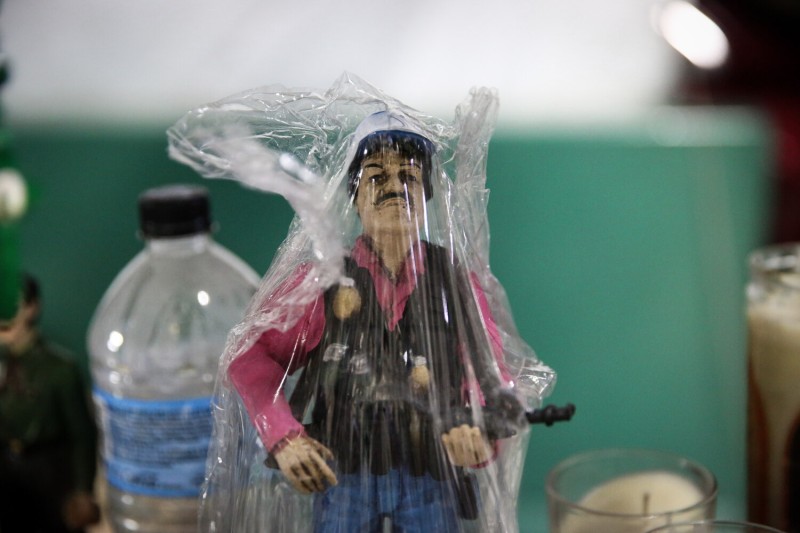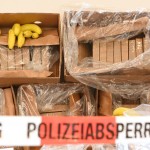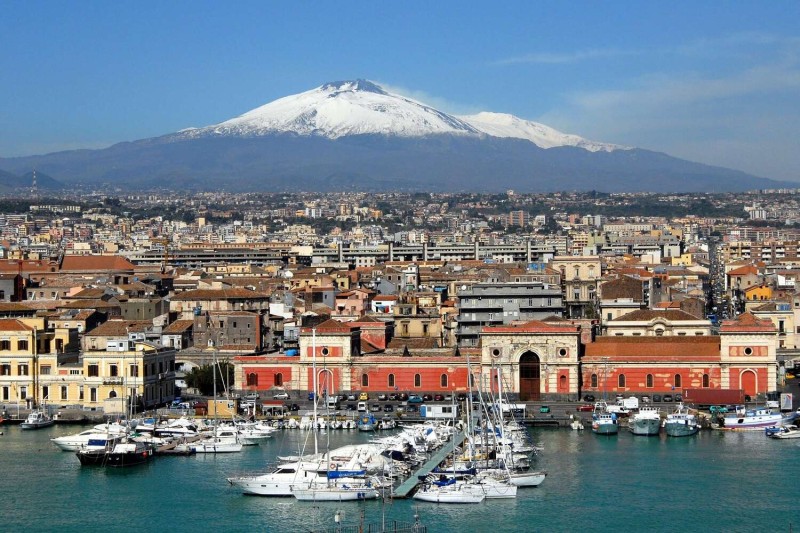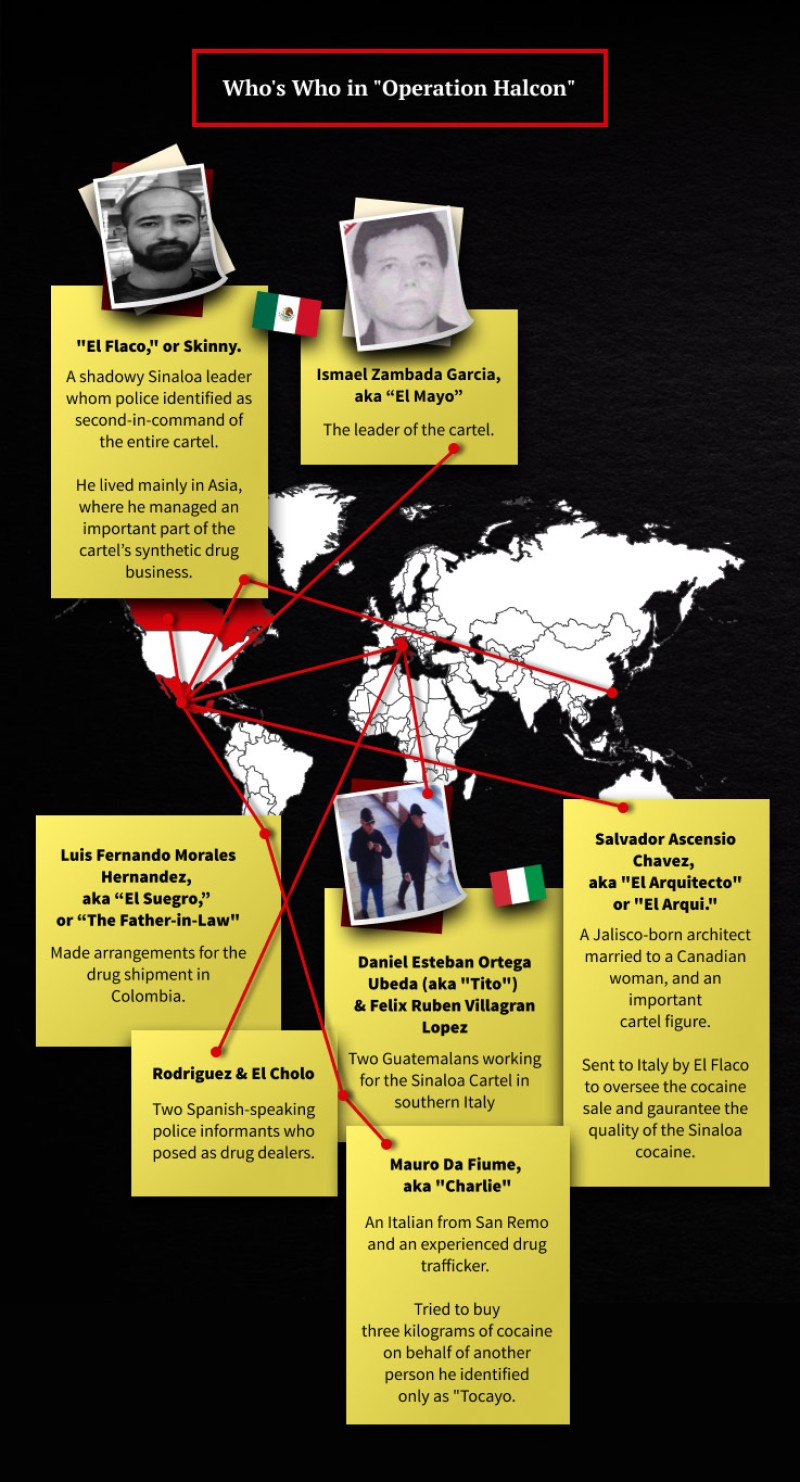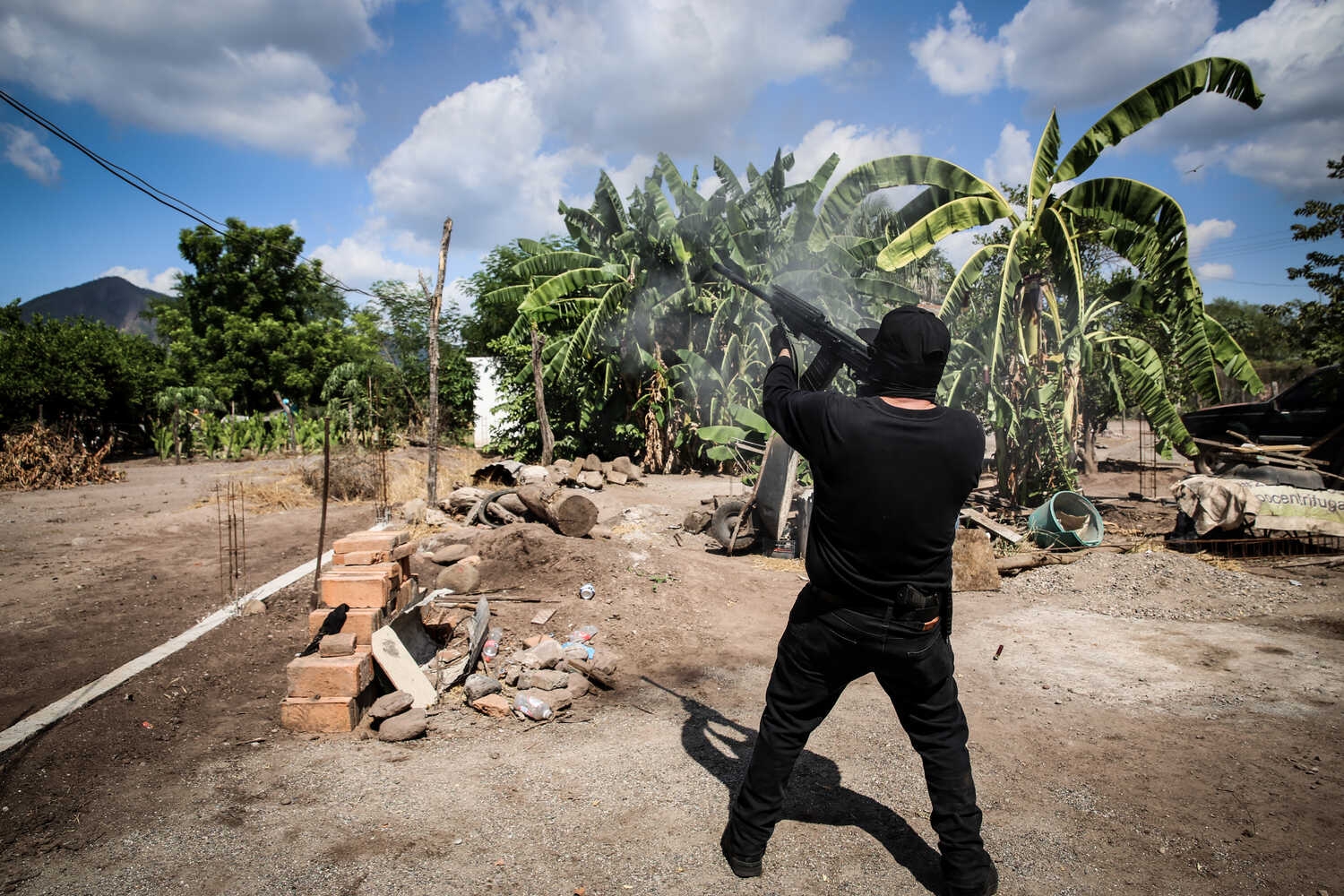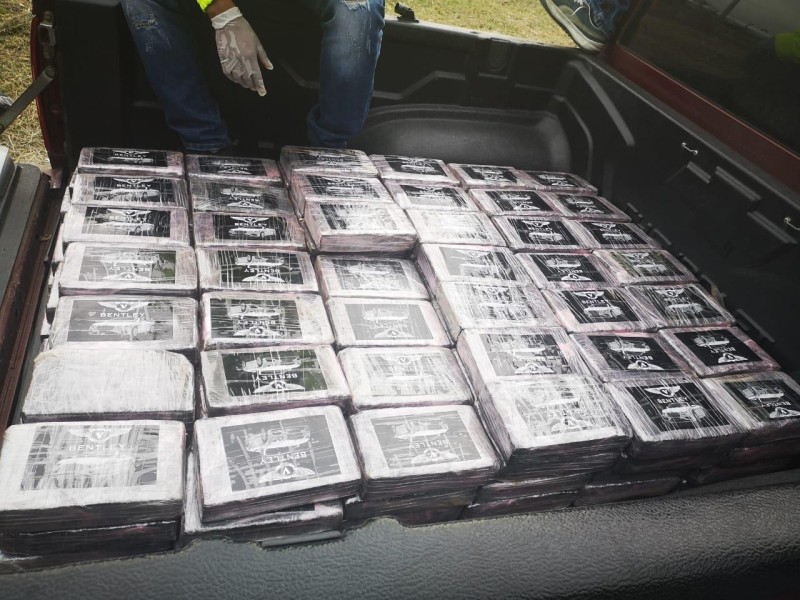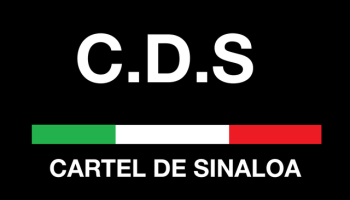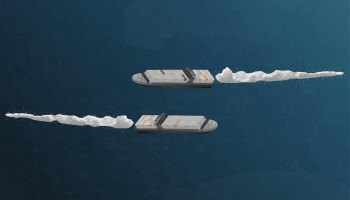Police agencies have long known that Mexican drug cartels help supply Europe’s nearly US$10 billion annual cocaine habit, but acknowledge they have little idea about the workings of these highly organized and well-financed operations.
But now, a recent Italian police investigation, code-named Operation Halcon, has provided the most in-depth look yet into how Mexico’s leading drug traffickers, the Sinaloa Cartel, do business in Europe. IrpiMedia, OCCRP’s Italian partner, obtained access to police files and surveillance reports that show the cartel’s methods in unprecedented detail.
Operation Halcon started in early 2019, at a time when Europe was being flooded with cocaine from Latin America. The Sinaloa Cartel, a global leader in cocaine sales with operations in at least 50 countries, was looking for new routes into Italy as a way to expand its European presence. Mexican cartels already sold synthetic drugs such as methamphetamine on the continent, but Colombian, Albanian, and Italian organized crime have historically dominated Europe’s cocaine trade.
Most drugs arrive in Europe by ship, usually to large ports with good connections to other major cities. Sinaloa wanted to establish another route: Bulk shipment by private planes flying into small airports in Southern Italy, with the drugs then trans-shipped to other parts of the country.
Catania, a mid-size city on Sicily’s eastern coast, was chosen for a test. The area, which was rapidly becoming a tourist destination, offered an international airport and a special draw: an airport official willing to help.
The Informant
The cartel’s plan didn’t stay secret for long. The Organized Crime Investigation Group (GICO), the anti-mafia unit of Italy’s financial police in Catania, learned from an informant in January 2019 that Sinaloa was planning to fly in cocaine from Colombia.
The tip seemed odd. Catania isn’t known as a hub for international drug trafficking, and direct drug flights using private planes are generally unknown in Italy. Catania–Fontanarossa Airport had only limited international service, while the local port sees relatively little commercial traffic.
But the local head of the GICO, Captain Pablo Leccese, took the report seriously. In less than three months, the unit identified the cartel’s players in southern Italy: Guatemalans Daniel “Tito” Esteban Ortega Ubeda and Felix Ruben Villagran Lopez. The airport insider was identified only by his nickname, Don Señor.
Ortega and Villagran were working with another Guatemalan, Luis Fernando Morales Hernandez, alias “El Suegro,” or “The Father-in-Law,” who would make arrangements for the shipment in Colombia.
The police informant added more names to the file. The cell operating in Catania was under the direction of a shadowy Sinaloa leader known as “El Flaco," or “Skinny,” whom police identified as second-in-command of the entire cartel after drug lord Ismael “El Mayo” Zambada Garcia.
El Flaco was soon to meet Don Señor to work out the logistics for handling the cocaine flight and the distribution of its cargo to buyers from various organized crime groups who would come for it.
The Italian police would be waiting for them.
On June 1, 2019, El Flaco landed in Catania with a female companion. After the couple checked in at the luxury seaside Romano Palace Hotel, the police learned his real name for the first time: José Angel Rivera Zazueta.
The following day El Flaco, Don Señor, and their associates met in a hotel restaurant to go over the plan. A private plane would fly from Mexico to Cartagena, Colombia, where it would be loaded with cocaine. After refueling in Cape Verde, it would land in Catania, where Don Señor would shift the drugs to a vehicle, avoid customs, and head to northern Italy — likely to Verona.
Two elements of the plan were a surprise to the financial police: The contraband was to be flown by a pilot usually entrusted with similar tasks by Joaquín “El Chapo” Guzmán Loera, the legendary former Sinaloa leader. And the size of the “test” was staggering.
"We know this Sinaloa cell had already imported cocaine to Europe and that they already had 1.5 tons of cocaine ready to be sent after a couple of hundred kilos of trial," Leccese told IrpiMedia.
On arrival in Italy, the drugs would be sold to the Calabrian mafia, the ’Ndrangheta, which is widely considered to be Europe’s most powerful cocaine distributor. Mafia involvement made sense. Sinaloa is known to forge partnerships with existing organizations, rather than trying to steamroll its way into new markets.
Cops bugged a restaurant where the narco traffickers would meet, and settled in to listen. What they heard was a revelation. Italian law enforcement seldom gets an inside look at Mexican cartels, but now El Flaco was laying it all out for his associates, unaware that his tutorials were reaching the ears of the police.
Catania police heard boasts of 35 small planes each week leaving Venezuela to Chetumal, a resort town on the border of Mexico and Belize. Each allegedly carried 500 to 800 kilograms of cocaine — more than half of the world’s total annual cocaine production — and all with the blessing of the Venezuelan military.
The flights likely came from San Felipe, in northwest Venezuelan state of Zulia, where there are so many traffickers that locals call their town “Sinaloa,” according to the InSightCrime website.
The restaurant talk also turned to more personal news. The traffickers spoke about Villagran’s family, which was said to handle two to three tons of cocaine per month. They spoke of “El Sordo” (The Deaf), who is now part of Mexico’s Guardia Nacional, and of “El Calvo” (The Bald), a key cartel operative in Canada.
Tales were told about El Flaco’s two girlfriends, one a relative of the late drug lord Amado Carrillo Fuentes, and about his father, who supposedly owned thousands of currency exchange shops, as well as his alleged contacts in the CIA.
Although the Italian investigators couldn’t confirm much of the restaurant talk, they were fascinated.
A Little “Help” From the Police
In mid-June, the informant told police that El Flaco had a 300-kilogram test shipment ready in Colombia and would send it to Catania as soon as the cartel could line up a facilitator in Cartagena.
On June 18, Don Señor met the cartel members in Rome. As police listened in, El Flaco offered to follow the test run with another 1,500 kilograms via private jet from Cartagena, through Mexico, to Catania.
But the cartel encountered unforeseen problems. It had trouble finding someone in Cartagena to facilitate the shipment. The whole operation was accumulating delays.
So the police decided to “help” them.
Working with the Antidrug Central Directorate, a police body that coordinates antidrug operations in Italy, and the Italian antidrug attache in Bogotá, Captain Leccese brought in two Latino informants based in Italy, code-named Rodriguez and El Cholo, along with a Colombian Dirección de Antinarcóticos undercover officer, known as Lucas, to pose as drug dealers.
In late August, Villagran and Morales took El Cholo and Lucas to meet suppliers in the mountains in southern Colombia’s Cauca region. After passing through a checkpoint, where they were likely photographed, they reached a place in the jungle where traffickers confiscated their cellphones. From there, they walked through the jungle to a cocaine refinery.
El Abuelo, “The Grandfather,” a former member of the now-defunct Revolutionary Armed Forces of Colombia (FARC) guerrillas, showed them around, displaying drugs being cooked and shipments ready to go out.
Meanwhile, Rodriguez was halfway around the world, meeting El Flaco in Kaohsiung, Taiwan. Police in Catania had learned that El Flaco lived mainly in Asia, where he managed an important part of the cartel’s synthetic drug business.
The undercover operation soon encountered logistical problems of its own. The Colombian cocaine cooks delayed shipment to the cartel until October. Still more time was lost when a national strike closed Colombia's airports.
Once again, the Italian and Colombian police stepped in to help. The informant, El Cholo, offered to provide a “better alternative” using his contacts at the Bogotá airport to place the drugs on an airline flight.
The Delivery
Finally, on January 9, 2020, around 400 kilograms of cocaine arrived in Catania aboard a passenger flight. Don Señor moved it to a safe house at the edge of the city.
Don Señor, Ortega, Rodriguez, and El Cholo were on their way to inspect the cargo when El Flaco called from Cancun for an update. Again, police listened in as Ortega checked the shipment and produced El Flaco’s written instructions about how the drug should be distributed.
"So the compensation is 32," he said, referring to the number of cocaine bricks Don Señor would get for his labor. That much cocaine would be worth nearly $1 million in Europe.
"The compensation is better than a payment," Rodriguez said with a laugh.
Cartels like to compensate collaborators outside their organization by giving them product, rather than money. Cash payments would mean the smugglers would have to divulge business information, such as profits, to outsiders.
"My uncle told me he needs 20 in Genoa," Ortega continued. “And we need three in Verona if possible.”
Again, the traffickers’ work didn’t go smoothly. An emissary of a Chinese criminal organization based near Milan but with ties to Mexico, already angry at the delayed delivery, demanded a kilogram to test. If his organization liked the quality, he would want 50 kilograms upfront.
The Mexicans stalled. “Charlie,” an Italian working for a mysterious figure referred to only as “Tocayo,” was their priority for this load because he wanted to make a far bigger purchase.
The plan, Ortega told El Flaco in a call, was to take three kilograms to Charlie in Verona, followed by deliveries of 20 kilograms at a time, for a total sale of up to 300 kilograms.
On January 16, Ortega and Villagran flew to Verona to meet “El Arquitecto," an important cartel figure who was coming from Mexico to oversee the sale, and met Don Señor, who had brought his order. Again, Italian police managed to listen in.
An indictment later filed in Catania describes El Arqui as El Flaco’s representative, sent to guarantee the quality of the Sinaloa cocaine. Villagran told his associates that El Arqui wanted to test the product before delivering it.
But the traffickers couldn’t catch a break. El Arqui and Charlie were delayed by snow. On January 22, they reached Milan and went straight to meet the buyer, Charlie’s boss. Later, they delivered 35,000 euros for the initial three kilograms to Ortega and Villagran near Verona.
Italy’s Financial Police, who were watching both groups all along, arrested Ortega and Villagran in Verona. They were charged with international drug trafficking and distribution and taken into custody, but have not yet been put on trial.
The ’Ndrangheta
The police also set up a roadblock as an excuse to stop the Milan contingent’s Mercedes E350 and identify — but not arrest — El Arqui and Charlie.
El Arqui proved to be Jalisco-born Salvador Ascensio Chavez. Charlie is Mauro Da Fiume, an Italian from San Remo. Both are experienced drug traffickers.
Records obtained by The Cartel Project show that El Arqui, identified by Canada’s iNFOnews as a Mexican architect married to a Canadian, served a three-year prison term in Canada after being convicted for importing 2.2 kilograms of cocaine in 2001. His record was erased after he was granted a pardon.
In 2010, El Arqui was caught smuggling 97 kilograms of cocaine hidden in a fruit-grinding machine imported from Argentina, and was sentenced to more than seven years in prison in 2014. In 2017 he was granted release and deported to Mexico.
In a Canadian parole board document, authorities summarize El Arqui’s admission of guilt and his promise to go straight: “You admitted associating with cartels and/or organized crime in Mexico," the Canadians wrote. "You told the Board that you have a large positive community support in your country and are planning to design and build homes."
The document doesn’t mention plans to supervise Sinaloa cocaine sales in Europe.
Da Fiume owned a restaurant and two import-export companies in Barcelona. His involvement in the deal suggests the drugs were destined for one or more ’Ndrangheta clans.
Spanish police arrested da Fiume on February 4 on behalf of Catania authorities for being part of a “criminal association aimed at drug trafficking and possession” which planned to move “huge amounts of cocaine” through “a criminal organization operating in Italy, Colombia, Mexico and Spain."
A list maintained by the police agency puts Da Fiume among "people linked to the ‘Ndrangheta,” and identified him as having ties to the Sinaloa Cartel.
Mauro Da Fiume was allegedly associated with a long-running operation trafficking cocaine between Italy, France, Spain and Morocco. That operation, exposed in 2015 by the Genoa anti-mafia bureau’s “Operation Trait d’Union,” dealt with the Piromalli-Molè clan’s infiltration of Genoa and the movement of drugs through the French Riviera.
Da Fiume was not arrested in Operation Trait d’Union, but was identified as the right-hand man of clan boss Antonio Magnoli.
Ascensio Chavez, El Flaco, and Morales remain at large. They will soon be tried in absentia in Catania for international drug trafficking.
Antonio Baquero (OCCRP), Marco Oved (Toronto Star), Mathieu Tortlieur (Proceso), and Paolo Frosina (IrpiMedia) contributed reporting.
